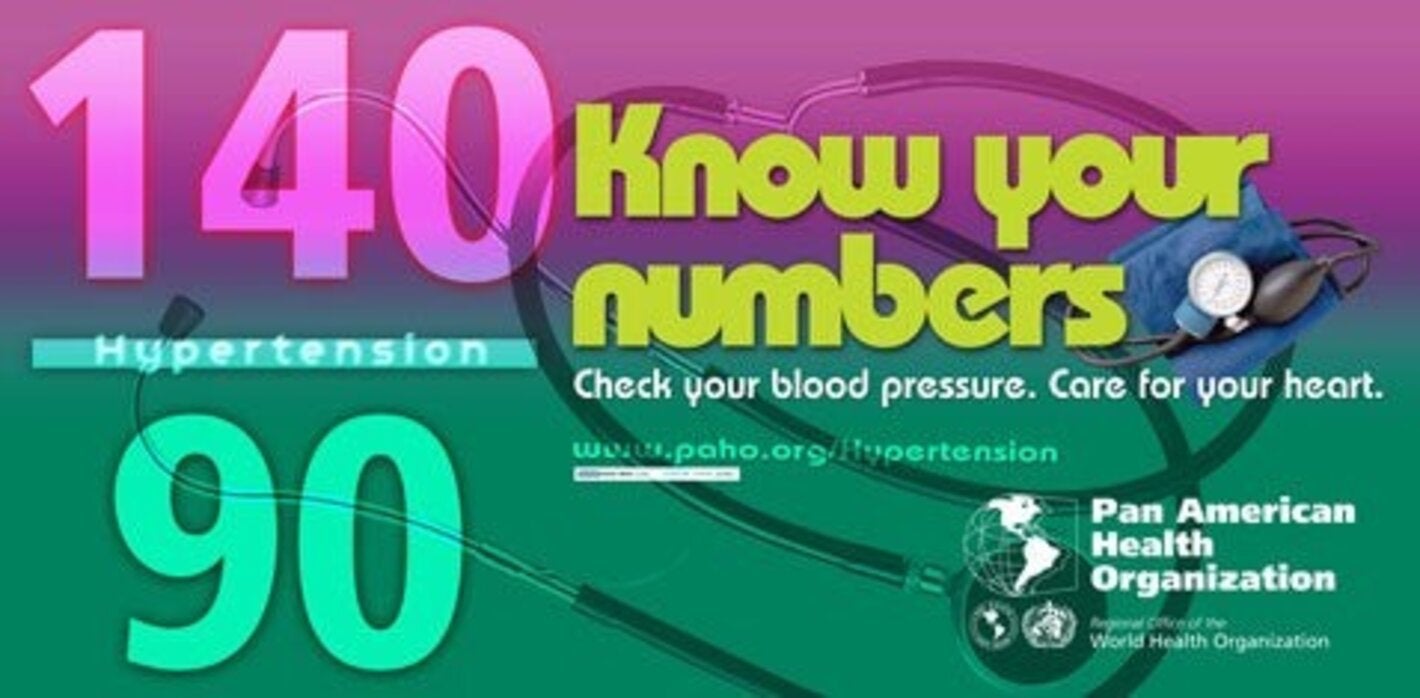
Up to 90% of people could develop high blood pressure if current trends continue
Washington, D.C., 5 April 2013 (PAHO/WHO) — High blood pressure —currently the number-one risk factor for disease and illness worldwide— is a treatable and preventable condition whose risk can be reduced through lifestyle changes, particularly eating less salt and getting more exercise.
However, experts at the Pan American Health Organization/World Health Organization (PAHO/WHO) today said that hypertension and other chronic health problems are not just a matter of personal behavior. Reducing them requires shaping people's environments in ways that facilitate healthy eating, physical activity, and universal access to preventive and curative health care.
"What can we say to help people reduce their chances of developing high blood pressure?," PAHO Director Carissa F. Etienne asked during an event celebrating World Health Day, whose theme for 2013 is "Hypertension: Know your numbers."
"We can urge them to reduce their salt intake, eat a healthy and balanced diet, avoid harmful use of alcohol, engage in regular physical activity, and maintain a healthy body weight," said Etienne. "But in tackling hypertension, it's just as important to take action at the population level."
Etienne cited population-level efforts that are currently being carried out in Latin American countries, including Argentina's work with the food industry to reduce salt in bread and other industrially processed foods, Colombia's "Sunday bikeways" (ciclovias), and Peru's efforts to promote its traditional—and internationally renowned—cuisine over modern, over-processed foods.
Norman Campbell, professor at the University of Calgary and president-elect of the World Hypertension League, predicted that as many as 90% of people worldwide could develop hypertension (blood pressure of 140/90 or higher) at some point in their lives, if current trends continue. To avert this looming health threat, he called for measures that have an impact at the population level, including banning advertising of sugar-sweetened beverages and other junk foods to children and government regulations aimed at reducing salt in processed foods.
Bill Corr, deputy secretary of the U.S. Department of Health and Human Services (HHS), said universal health coverage is equally important to achieve reductions in hypertension and other chronic conditions.
"Universal health coverage is not an end unto itself—but it is an essential goal that will help improve health outcomes across the board," said Corr. "And we believe that it is a goal that can unify the world in its shared pursuit of better health."
Sonia Angell, senior advisor for global noncommunicable diseases at the U.S. Centers for Disease Control and Prevention (CDC), noted that governments around the world have endorsed a set of targets for reducing the burden of noncommunicable diseases, which include reducing the prevalence of high blood pressure by 25% by the year 2025.
"There are two ways to achieve this goal, healthier lifestyles and controlled blood pressure," said Angell. "If blood pressure levels remain unchanged, healthcare costs over the next 10 years could reach $1 trillion globally and $43 billion in Latin America and the Caribbean."
Cristina Rabadán-Diehl, acting director of the Office of Global Health at the United States' National Heart, Lung and Blood Institute, said reducing hypertension and other risk factors for noncommunicable diseases requires action and partnerships across multiple sectors.
"While we are feeling the impact of these diseases in the health sector, the solutions are not just in the health sector," she said. "It requires multi-sector and international partnerships that work together to reduce risk factors for noncommunicable diseases."



